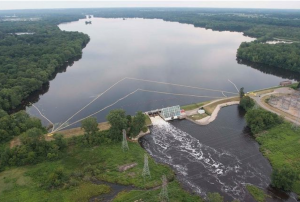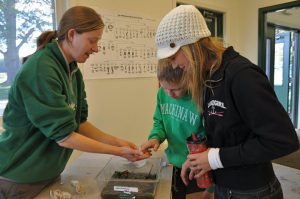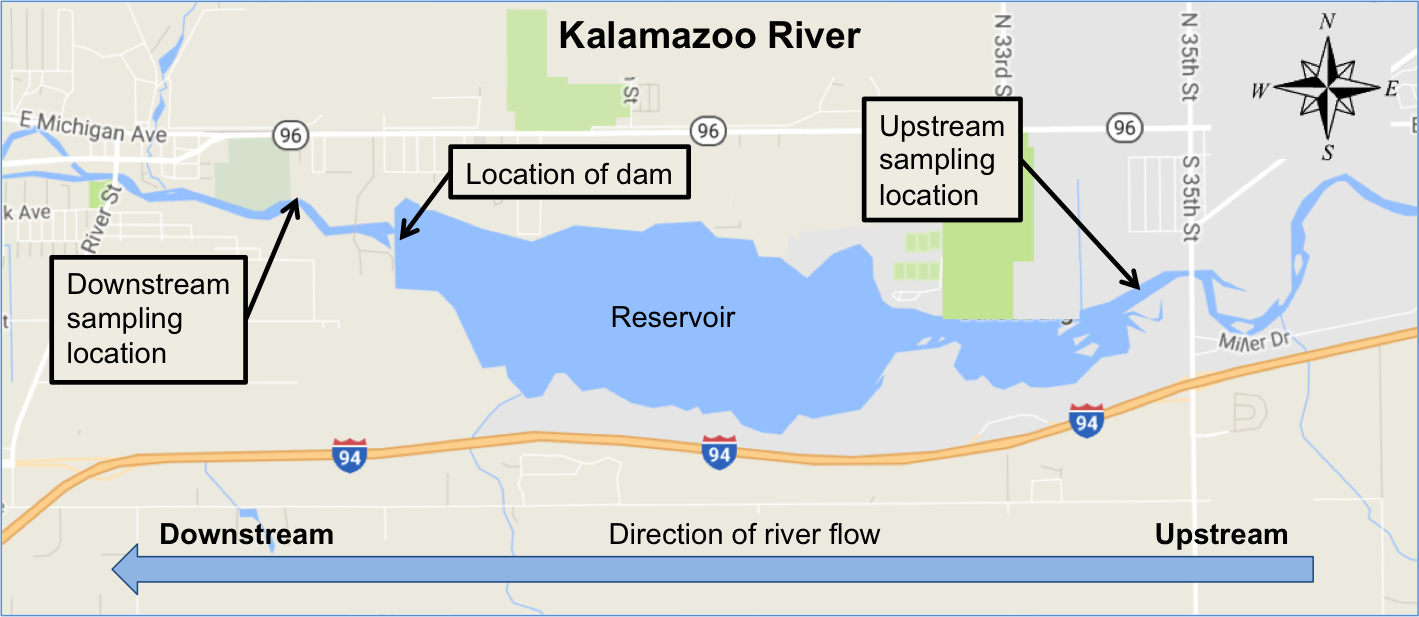
Morrow Lake, a reservoir created along the Kalamazoo River. The water is held in a reservoir by a dam. When water flows into the reservoir it slows, potentially letting some of the total suspended solids settle to the bottom of the river.
The activities are as follows:
- Teacher Guide
- Student activity, Graph Type A, Level 2
- Student activity, Graph Type B, Level 2
- Student activity, Graph Type C, Level 2
- Grading Rubric
- Digital Data Nugget on DataClassroom
Ever since she was a kid, rivers have fascinated Leila. One of her hobbies is to kayak and canoe down the Kalamazoo River in Michigan, near where she lives. For her work, she researches all the living things in the river and how humans affect them. She is especially interested in changes in the river food web, caused by humans building dams along the river, and an oil spill in 2010.
Leila knows there is a lot more in river water than what meets the eye! As the river flows, it picks up bits of dead plants, single-celled algae, and other living and nonliving particles from the bottom of the river. The mix of all these particles is called total suspended solids (TSS) because these particles are suspended in the river water as it flows. The food web in the Kalamazoo River depends on the particles that are floating in the water. Invertebrates eat decomposing leaves and algae, and fish eat the invertebrates.

Leila showing off some of the cool invertebrates that can be found in the Kalamazoo River.
As you float down the river, particles settle to the river bottom and new ones are picked up. The amount of suspended solids in a river is influenced by how fast the water in the river is flowing. The faster the water flows, the more particles are picked up and carried down the river. The slower the water flows, the more particles will settle to the bottom. Discharge is a measure of how fast water is flowing. You can think about discharge as the number of cubes (one foot on each side) filled with water that pass by a point every second. During certain times of the year, water flows faster and there is more discharge. In spring, when the snow starts melting, a lot of water drains from the land into the river. There also tends to be a lot more rain in the fall. Things humans build on the river can also affect discharge. For example, we build dams to generate hydroelectric power by capturing the energy from flowing water. Dams slow the flow of river water, and therefore they may cause some of the suspended solids to settle out of the water and onto the bottom of the river.
Leila wanted to test how a dam that was built on the Kalamazoo River influenced total suspended solids. If the dam is reducing the amount of total suspended solids, it could have negative effects on the food chain. She was also curious to see if the dam has different effects depending on the time of year. On eight different days from May to October in 2009, Leila measured total suspended solids at two locations along river. She collected water samples upstream of the dam, before the water enters the reservoir, and samples downstream after the water has been in the reservoir and passed over the dam. She also measured discharge downstream of the dam.

Featured scientist: Leila Desotelle from Michigan State University
Flesch–Kincaid Reading Grade Level = 8.7
If your students are looking for more information on how the amount of water flowing in the river affects the food chain and the health of the ecosystem overall, check out the video below!
- A video in BioInteractive’s “Scientists at Work” series showing researchers working on the same questions in a different river system: Riverine Food Webs – How Flow Rates Affect Biomass
